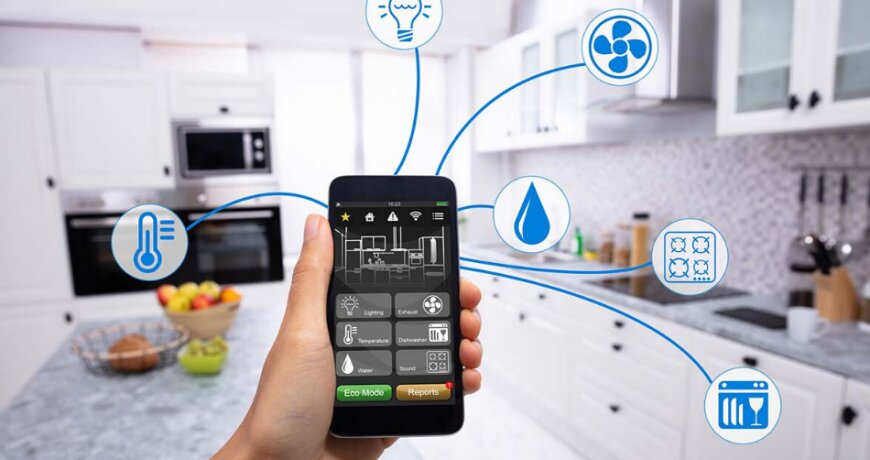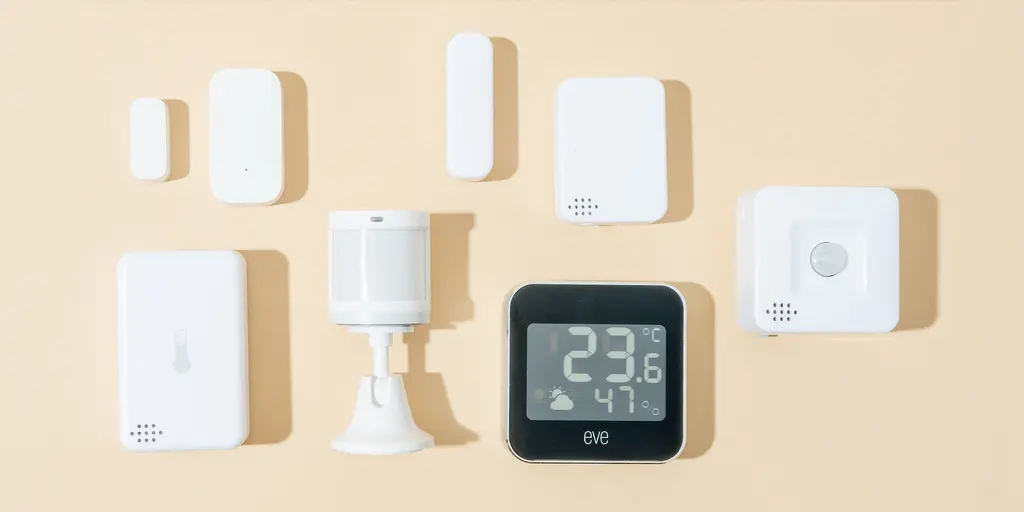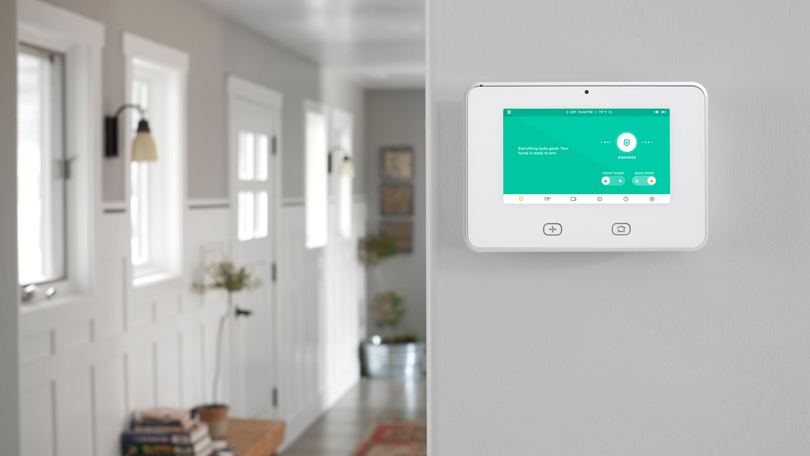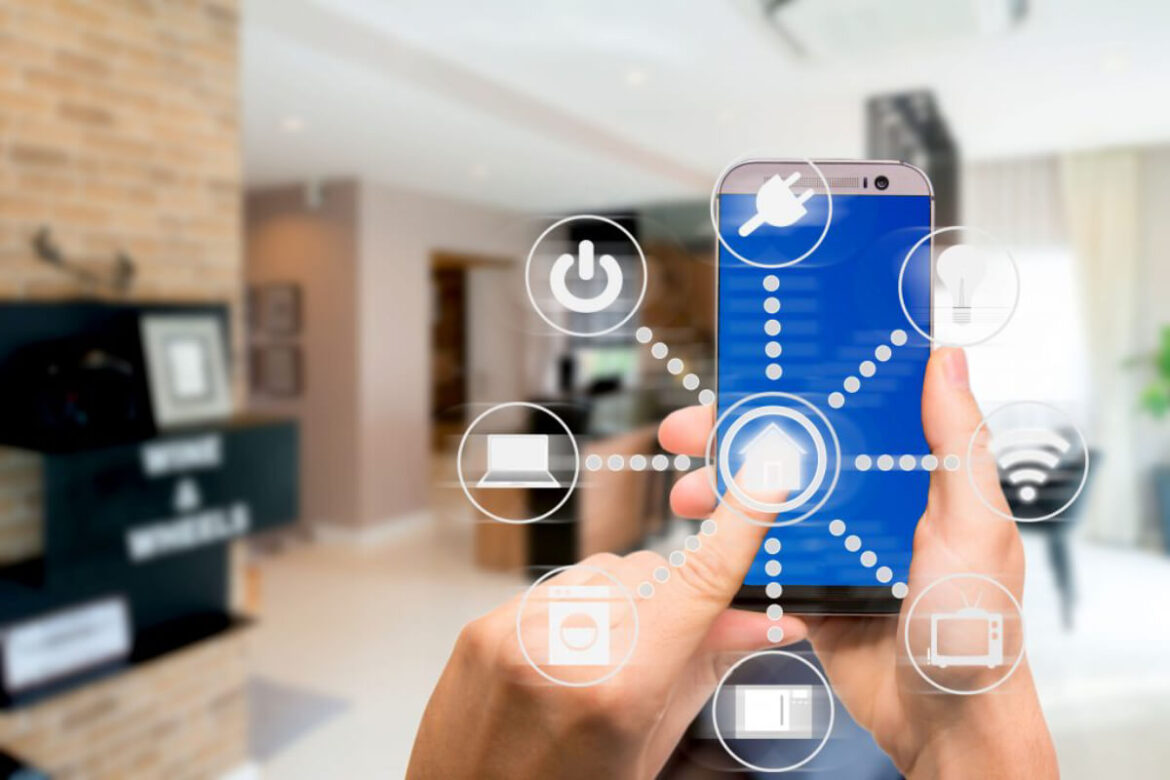In an era defined by rapid leaps in technology, you would be naive to think our houses could be left alone. For those who yearn for the simplicity of the ages past, high-tech homes could prove ghastly, but for most of us, who value comfort and seek ways to bring more convenience to our houses, the concept of a “smart home” has pleasantly evolved from a futuristic dream into an everyday reality.
The seamless integration of technology and implementation of home automation into our living spaces has given birth to home automation, a trend that is reshaping the way we interact with our homes. Imagine walking into a space that knows your preferences, adapts to your needs, and enhances your daily life without requiring constant manual adjustments. This is the promise of home automation.
In this blog, we travel into the heart of this transformative trend. At the core of our exploration lies the intricate relationship between technology and the implementation of home automation. We’ll unravel the inner workings of this technological realm, examine the key components driving its growth, and guide you through the process of bringing automation into your home.
Whether you’re a tech enthusiast eager to explore the latest innovations or a homeowner looking to enhance your living environment, you will gain a basic but necessary insight to embark on your home automation journey. Let’s now delve into the world where technology and comfort converge, offering a glimpse into the future of living spaces – where homes truly come alive.
Table of Contents
Understanding Home Automation Technology
The modern home is no longer just a physical space where you grab a bite to eat or crash for the night; it is gradually becoming an intelligent environment that responds to our needs and desires, bringing comfort and convenience to a whole new level. This transformation is powered by the technology and implementation of home automation – a web of interconnected devices and systems designed to make our lives more convenient, efficient, and enjoyable. To truly grasp the essence of home automation, let’s discuss its intricacies by breaking down the technology involved and understanding the relevant fundamental components.
What is home automation to begin with?
Home automation, also known as smart home technology, refers to the integration of various types of electronic devices, appliances, and systems – powered by different technologies, such as face recognition, motion detection, and artificial intelligence – within a home to create a network that can be controlled and monitored remotely. This network is designed to enhance comfort, security, energy efficiency, and overall convenience for homeowners.
The parts and parcels of home automation
At its core, home automation relies on several key components working in harmony to create a cohesive ecosystem. These components, which operate based on different technologies, include:
smart devices
Smart devices are the building blocks of home automation. They encompass a wide range of devices, such as smart thermostats, smart lights, smart locks, smart plugs, and more. These devices are equipped with sensors, processors, and communication capabilities that enable them to interact with the environment, with each other, and with users.

sensors
Sensors play a vital role in gathering data from the environment. They include sensors for detecting and measuring motion, temperature, light, moisture, and many more factors. These sensors provide real-time information that helps the system make informed decisions and trigger automated actions.

controllers
Controllers are the command centers of your home automation setup. They manage communication between devices, process data from sensors, and execute commands. Controllers can be dedicated hubs or software-based systems that enable centralized control. By the way, don’t be put off by this category, as controllers should not be misconstrued as devices you should manually control but as high-tech gadgets that control your entire automation network.

connectivity solutions
For devices to communicate effectively, they require various wireless connectivity protocols. You can’t have wires running from the front door to the living room lamp to the sprinklers in the backyard. It’s simply not possible. Common wireless protocols include Wi-Fi, Zigbee, Z-Wave, and Bluetooth. These protocols enable seamless communication and data exchange between devices without the inconvenience of having wires up and down the walls.
Types of Home Automation Systems
As home automation has evolved, various system architectures have emerged to cater to different needs and preferences. Understanding these system types can help you choose the most suitable approach for your home. But generally speaking, for the sake of brevity and to stay within the scope of this article, home automation systems are of three types:
Centralized systems
In a centralized system, all devices are connected to a single hub or controller. This hub acts as a central command center, allowing users to control and monitor all connected devices from a single interface. While offering convenience, centralized systems can sometimes become a single point of failure, bringing the whole system down to a standstill.
Decentralized systems
Decentralized systems distribute intelligence across individual devices. Each device can operate independently based on its programming and sensors. While offering resilience against a central hub failure, decentralized systems may lack the unified control of centralized setup, their setup can be quite resource-intensive and, in particular, time-consuming.
Hybrid systems
These systems combine elements of both centralized and decentralized setups. They strike a balance between centralized control and device autonomy, offering flexibility and redundancy. Through the use of hybrid systems, you can opt for a system that can be controlled centrally but simultaneously enjoys smart solutions to steer clear of any total system shutdowns by creating potentially-isolated system segments when and where possible.
Key Technologies Driving Home Automation
The magic of home automation doesn’t happen by chance; it’s rooted in decades of research and experimentation and powered by a blend of cutting-edge technologies that work together to create a seamless and intelligent living environment. Specifically, there are two pivotal technologies that form the backbone of home automation: IoT and AI.
Internet of Things (IoT)
At the heart of home automation lies the concept of the Internet of Things (IoT). This term refers to the network of interconnected devices – from smart thermostats to security cameras – that communicate and share data without human intervention. Through the IoT, these devices work together to create a cohesive and responsive environment.
IoT wireless protocols
The IoT thrives on wireless connectivity protocols that enable devices to communicate over short distances. Common protocols include Wi-Fi, Zigbee, Z-Wave, and Bluetooth. Each protocol offers specific advantages in terms of range, power efficiency, and data transfer speed, allowing devices to communicate seamlessly.
IoT applications
The IoT enables a plethora of real-world applications, such as remote control of lights, thermostats, and security cameras via smartphone apps. It also enables advanced scenarios, like setting up automation routines based on user-defined triggers, such as time of day, occupancy, or even the weather outside.
Artificial Intelligence (AI) and Machine Learning (ML)
enhancing automation
Home automation becomes truly remarkable when it learns and adapts to your routines and preferences. This is where artificial intelligence and machine learning come into play. AI allows devices to mimic human-like decision-making processes, while ML enables devices to learn from data and improve over time.
personalized experiences
Imagine a thermostat that learns when you prefer a warmer or cooler environment and adjusts itself accordingly. Or a lighting system that adapts to your preferred brightness levels based on the time of day. AI and ML make these personalized experiences possible by analyzing user behavior and optimizing device settings.
voice assistants
One of the most tangible applications of AI in home automation is the rise of voice assistants like Amazon’s Alexa, Google Assistant, and Apple’s Siri. These virtual companions understand and execute voice commands, allowing users to control a multitude of smart devices using natural language.
predictive capabilities
Through continuous data analysis, AI can predict your needs and adjust the environment accordingly. For instance, AI-powered systems can learn when you typically arrive home and start adjusting the temperature to your liking before you even walk through the door.
The synergy between IoT and AI has given rise to a new era of home automation, where technology isn’t just a tool but a perceptive companion that understands and responds to your needs. As we move forward, the applications of these technologies are bound to expand, creating homes that are not only smart but also intuitive and anticipatory.
Common Home Automation Applications
Embracing home automation doesn’t just mean adding convenience; it’s about crafting an environment that caters to your every need. From enhancing security to optimizing energy usage and elevating entertainment, the applications of home automation are as diverse as they are transformative.
Home security
In a rapidly evolving world, ensuring the safety of your home and loved ones is paramount. Home automation offers an array of security solutions that put you in control:
- Cameras and remote monitoring: Smart cameras enable remote real-time monitoring of your property. Access camera feeds from your smartphone to keep an eye on your home, pets, or even your children.
- Sensors and alarms: Motion sensors and door/window sensors can trigger alarms when unexpected activity is detected. Receive instant notifications on your phone and act swiftly in case of a breach.
- Smart locks: Gone are the days of fumbling for keys. Smart locks offer keyless entry through biometrics, PIN codes, or smartphone apps. Grant access to visitors remotely, enhancing both convenience and security.

Home efficiency
Efficiency isn’t just about saving time; it’s also about reducing wastage and minimizing your carbon footprint. Home automation technologies can help you achieve these goals:
- Water leak detection: Smart sensors can detect leaks and water damage early, helping you prevent costly repairs and water wastage.
- Energy management: Monitor your energy consumption in real-time and identify energy-hogging devices. Some systems even provide recommendations for energy-efficient practices.
- Heating and cooling: Smart thermostats learn your preferences and adjust the temperature based on your schedule, saving energy without compromising comfort.
- Smart irrigation: Ensure your garden gets just the right amount of water by automating your irrigation system based on weather forecasts and soil conditions.
- Thermostats and lighting: Set up lighting and thermostat schedules that align with your daily routines. Dim the lights automatically in the evening or adjust the thermostat when you’re away.
Entertainment
Entertainment takes a leap forward with home automation, creating immersive experiences for you and your guests:
- Automated home theater: Dim the lights, close the curtains, and start your home theater setup with a single voice command or tap.
- Seating arrangements: Motorized furniture can adjust seating positions and arrangements for optimal comfort during movie nights or gatherings.
- Speakers and audio: Stream your favorite music to any room using smart speakers. Sync audio across spaces to create a seamless ambiance.
Personal care
Home automation extends beyond the physical environment, supporting your health and well-being:
- Exercise automation and monitoring: Set up automated exercise routines that adjust to your fitness levels. Wearable devices can track your progress and provide real-time feedback.
- Health monitoring: Connect health monitoring devices to your smart home system for seamless data tracking. Receive alerts if any health parameters fall outside the normal range.
- Sleep optimization: Program your bedroom environment to promote better sleep, adjusting factors like lighting, temperature, and sound to match your sleep cycle.
Home assistants
Home automation is the ultimate personal assistant, making everyday tasks more convenient and efficient:
- Automated cleaning: Some robotic cleaning devices, such as robotic vacuum cleaners, can keep your floors clean without any intervention. Some models even empty their own dustbins. You can also get customized alerts regarding the degree of cleanliness of different rooms, your car, etc.
- Garage door openers: You’ll be able to open and close your garage door remotely using your smartphone or through motion sensors, ensuring you never have to worry about leaving it open accidentally.
- Pet care: Automated pet feeders dispense food at scheduled times, and smart pet doors allow your furry friends to enter and exit the house while keeping strays out.
- Blinds and shades: Imagine controlling natural light and privacy with motorized blinds and shades. Set schedules or adjust them remotely to create the perfect ambiance.
- Plugs and outlets: You can turn any device into a smart device by plugging it into a smart outlet. Control appliances remotely and even monitor energy consumption.
- Virtual assistants: Virtual assistants like Amazon Alexa, Google Assistant, and Apple’s Siri tie everything together. They respond to voice commands, manage your devices, and provide information on demand.
As we witness the rise of technology and its seamless integration into our homes, the possibilities are limitless. Whether you’re looking to enhance security, create a comfortable living environment, or simplify everyday tasks, home automation empowers you to take control like never before.
Considerations Toward Creating an Automated House
The allure of a smarter home is undeniable, but where do you begin? Implementing home automation requires careful planning, thoughtful decision-making, and a clear roadmap.
Assessing needs and goals
- Understanding your lifestyle: Take time to evaluate your daily routine, habits, and preferences. Identify areas where automation can bring significant convenience or efficiency gains.
- Defining priorities: Determine your primary goals for home automation. Do you prioritize security, energy savings, entertainment, or all of the above? This will help you focus on the right technologies and devices.
Budgeting and planning
- Setting a budget: Home automation can range from simple, budget-friendly setups to more elaborate, high-end systems. Define a budget that aligns with your goals and ensures you’re investing in solutions that truly matter to you.
- Future-proofing: Plan for scalability and future upgrades. Opt for systems that allow you to expand and integrate new devices as your needs evolve. Home automation isn’t takeout dinner. As you progress through everyday life, you’ll find the need for changes and expansions.
Choosing the right devices
- Starting small: If you’re new to home automation, consider beginning with a few basic devices that have a noticeable impact on your daily life. Smart plugs, smart bulbs, and a smart thermostat are good starting points.
- Compatibility: Ensure the devices you choose are compatible with each other and can be integrated into a centralized control hub if desired.
- Reputable brands: Invest in devices from reputable manufacturers with a track record of reliability and customer support. This reduces the risk of compatibility issues and ensures a better user experience. Moreover, for more high-risk gadgets, such as smoke detectors or those using high voltages, you should certainly invest in safe and reliable devices.
Integration vs. centralization
- Central hub or ecosystem: Decide whether you want to use a central hub to control your devices or opt for an ecosystem that connects devices through a single platform. Consider factors like user-friendliness, compatibility, and available features. You’d definitely need an expert opinion specifically for this decision.
- Virtual assistants: If you choose an ecosystem, integrating virtual assistants like Amazon Alexa or Google Assistant can enhance control and convenience through voice commands.
- Testing and customization: Experiment with different automation scenarios and routines to find what works best for your household. Customization is key to tailoring the automation to your preferences.
Overcoming challenges and security concerns
- Data privacy and security: Understand the potential security risks associated with connecting devices to the internet. Use strong, unique passwords for each device, update firmware regularly, and prioritize devices with built-in security features.
- Technical hurdles: Be prepared for technical challenges during setup. Troubleshoot connectivity issues, ensure proper device placement, and seek online resources or manufacturer support when needed.
- Start small, grow gradually: Avoid overwhelming yourself with too many devices at once. Start with a few essential devices, get accustomed to their operation, and gradually expand your automation ecosystem.
As you embark on your home automation journey, keep in mind that it’s not just about the technology itself but how it enhances your daily life. By carefully assessing your needs, setting a realistic budget, choosing compatible devices, and integrating them intelligently, you can create a home that’s not only smarter but also more tailored to your unique lifestyle.
Conclusion
Home automation, the seamless integration of technology into our living spaces, reshapes how we interact with our homes. This transformative trend promises comfort, convenience, efficiency, and security by weaving together a network of interconnected devices and systems. From smart devices and sensors to controllers and connectivity solutions, the components of home automation work harmoniously to create an intelligent living environment.
The applications of home automation are diverse and impactful, spanning from security and energy efficiency to entertainment and personal care. Whether remotely monitoring your property, optimizing energy usage, creating immersive entertainment experiences, or streamlining daily tasks, home automation empowers homeowners to take control like never before.
In the ever-evolving landscape of technology, home automation is more than just a trend—it’s a glimpse into the future of living spaces, where comfort, convenience, and efficiency converge to create a truly intelligent environment.


